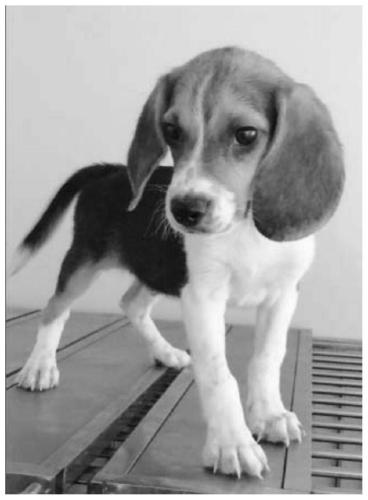Method for constructing autistic model dogs
An autism, model technology, applied to other methods of inserting foreign genetic material, biochemical equipment and methods, and microbial assay/examination, etc.
- Summary
- Abstract
- Description
- Claims
- Application Information
AI Technical Summary
Problems solved by technology
Method used
Image
Examples
Embodiment
[0127] (1) Preparation of Shanks3 gene knockout autism model dogs
[0128] The preparation of the Shanks3 gene knockout autism model dog comprises the following steps:
[0129] 1) According to the knockout sequence of the canine Shank3 gene, determine the sequence of the targeting site for the sequence of the exon;
[0130] 2) Synthesizing the sgRNA sequence according to the targeting site sequence determined in step (1), and then linking the synthesized sequence with the backbone carrier to construct the sgRNA targeting vector;
[0131] 3) Transcribe the sgRNA targeting vector in vitro to obtain the mRNA of the sgRNA, and transcribe CRISPR / Cas9 into mRNA in vitro;
[0132] 4) Use the existing Beagle skin fibroblasts for cell transfection and screening, extract genomic DNA from the cell clones obtained by screening, use target site-specific primers for PCR, and sequence the PCR products. According to the sequenced gene mutation As a result, calculate the targeting efficiency...
PUM
 Login to View More
Login to View More Abstract
Description
Claims
Application Information
 Login to View More
Login to View More - R&D
- Intellectual Property
- Life Sciences
- Materials
- Tech Scout
- Unparalleled Data Quality
- Higher Quality Content
- 60% Fewer Hallucinations
Browse by: Latest US Patents, China's latest patents, Technical Efficacy Thesaurus, Application Domain, Technology Topic, Popular Technical Reports.
© 2025 PatSnap. All rights reserved.Legal|Privacy policy|Modern Slavery Act Transparency Statement|Sitemap|About US| Contact US: help@patsnap.com



